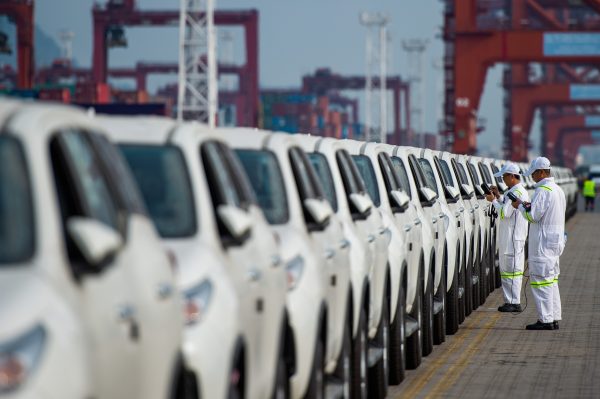Following Japan’s victory in the First Sino-Japanese War (1894–95), Japan received a series of valuable but highly unequal economic rights in China: most-favoured-nation status, preferential treatment for Japanese goods and foreign investment rights for Japanese manufacturers. These economic rights created the foundation for a highly complementary economic relationship that endured over the intervening decades — alongside colonialism, during war, a Cold War divide, historical grievances, territorial disputes and contestation over the future of the US-led order in Asia.
Deep patterns of economic integration between China and Japan offer three critical lessons for thinking about the factors that might help to build habits of cooperation in Asia.
First, individual businesspeople have helped to sustain close economic ties between the two countries despite major changes in governing regimes, political systems and economic ideology over the past century. In the 1930s and 1940s, Japanese business leaders travelled to China as part of Japan’s colonial empire in Manchuria. They established the industries in China that would extract Chinese soybeans and iron ore in exchange for Japanese machinery and steel. In the 1950s and 1960s, these same Japanese were among those who sought to rekindle trading ties between Communist China and post-war Japan. They would also develop government and business relationships that flourished following China’s economic reforms in the 1970s and 1980s.
As Kristin Vekasi has shown, Japanese firms with a high degree of familiarity with China’s business and political environment are much less risk averse than firms that have limited experience in China. Japanese firms deeply integrated into Chinese society and business communities have been willing to maintain or increase their economic presence in China, even as they have experienced costly anti-Japanese riots, boycotts and physical damage to their firms and products.
Second, flows of goods and people between China and Japan have been accompanied by flows of economic ideas. Japan has been a major influence on Chinese thinking about industrial-led development, the role of science and technology in a modernising economy and linkages between the military and civilian halves of an industrialised economy.
As China’s largest-ever provider of official development assistance (ODA), Japan played a major role in shaping China’s contemporary approaches to foreign aid and development, including its large-scale Belt and Road Initiative. Beginning in 1979, Japan provided bilateral loans to finance the building of roads, railways, ports and other major forms of infrastructure in China, as Marie Soderberg writes.
Japan’s focus on infrastructure-led development stemmed from its own experience of economic development. Japan had a view that infrastructure would enable it to facilitate trade with, and extract natural resources from, recipient countries. Japanese firms also frequently won contracts to build large-scale infrastructure projects in China.
China’s firsthand experience of Japanese ODA — and the hundreds of Chinese officials who worked closely with Japanese government agencies to administer infrastructure-led development in the 1980s and 1990s — have shaped China’s infrastructure-based development assistance as it shifted from a recipient to donor country.
Third, deep patterns of economic cooperation between China and Japan have created a separate sphere of regional economic activity that has often worked against the grain of the global order. During the first half of the Cold War, when global trading relations became divided into rival US-led and Soviet-led blocs, Japan and China continued to trade across Cold War lines.
Maintaining these trade ties was not easy in the absence of diplomatic relations — a result of the wishes of Japan’s ally, the United States — and given China’s Soviet-style planned economy. But the persistence of China–Japan trade helped to chip away at US expectations that its allies would undertake wholesale economic containment of China. It also provided China with important economic alternatives to the Soviet Union and laid the foundations for supply chains that would later underpin a distinct East Asian economic order.
Japan and China continue to exhibit similar patterns of strengthened regional economic activity in the face of a fracturing global order. Since 2018, Japan and China have agreed to mechanisms that will facilitate joint investment in third-country infrastructure projects. Agencies such as the Japanese External Trade Organization and China Council for the Promotion of International Trade are collaborating on China–Japan joint business development in Southeast Asia. The China Development Bank and Japan Bank for International Cooperation have agreed to common principles, initiated by Japan, to guide ‘high quality’ infrastructure investment.
Ongoing economic cooperation between China and Japan instead seeks to bring about greater convergence in global infrastructure investment against simplistic narratives seeking to pit ‘Western’ and ‘Chinese’ approaches to economic development. This bilateral economic activity should not be expected to ease the deep-seated political and security challenges in the China–Japan relationship. But the China–Japan infrastructure, investment and trade relationship serves as a critical example of how regional economic activity can resist the march toward economic decoupling or a ‘new Cold War’.
Economic cooperation between Japan and China has become habituated in persistent flows of people, goods and ideas. These flows have their own independent momentum such that economic ties have been sustained throughout periods of bilateral political conflict, serving to weld a fragmenting global order.
Amy King is a Senior Lecturer at the Strategic and Defence Studies Centre, The Australian National University.
This article appears in the most recent edition of East Asia Forum Quarterly, ‘Economics and Security’, Vol. 11 No. 4.

